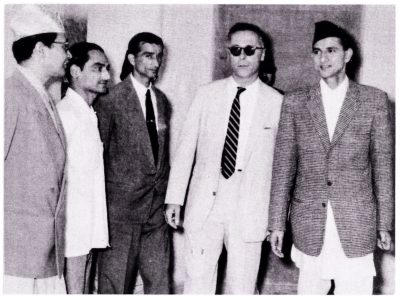America, Nepal and the Royal Coup
Declassified papers show American response to King Mahendra’s putsch 60 years ago this week

On 15 December 1960 (पुस १) exactly 60 years ago, King Mahendra ordered the jailing of Prime Minister BP Koirala and other political figures, many of whom the Nepali people had put in power 18 months earlier in Nepal’s first-ever election.
Ending a decade of democratic experimentation, Mahendra decided to rule the country directly. After his death in 1972 his son Birendra took power. Many of today’s top political leaders cut their political teeth in years of underground opposition to the monarchy.
The U S government at the time noted that Mahendra’s coup was accomplished ‘with great secrecy and superb organisation’. After 1960, the US slowly shifted its approach in Nepal, embracing the monarchy and moving away from democratic reform.
Ten years earlier, the globalisation of the Cold War had forced the US to pay more attention to South Asia. After China turned Communist in 1949 and war broke out on the Korean peninsula in 1950, Asian nations, particularly those near China, became hot spots for Cold War competition between the Soviet Union and China on one hand, and the US led capitalist democracies on the other.
During the 1950s, believing economic progress and expanded political freedoms would inoculate Nepal against communist influence, the U S offered aid programs and supported democratic reforms. As part of this vision, Washington promoted health and agriculture programs but also, in part to counter populist Communist Chinese programs, pushed for economic leveling programs such as land reform.
In the late 1950s, the US grew increasingly concerned as China and the Soviet Union expanded activities in Nepal. A November 1960 National Security document warned that Nepal had become ‘a particularly vulnerable target’.
But the US believed that Nepal’s 1959 election had strengthened the country. Nepal, the National Security document noted, ‘currently enjoys greater internal stability than heretofore, following the introduction of popularly-based parliamentary government’.
The US also thought highly of B P Koirala. A 1960 memo explained, ‘Koirala is intelligent, forceful, respected by his party, and popular with his people.’ He was ‘basically pro-Western and anti-Communist’ and didn’t underestimate the communist threat, showing ‘grave concern’ about it.

